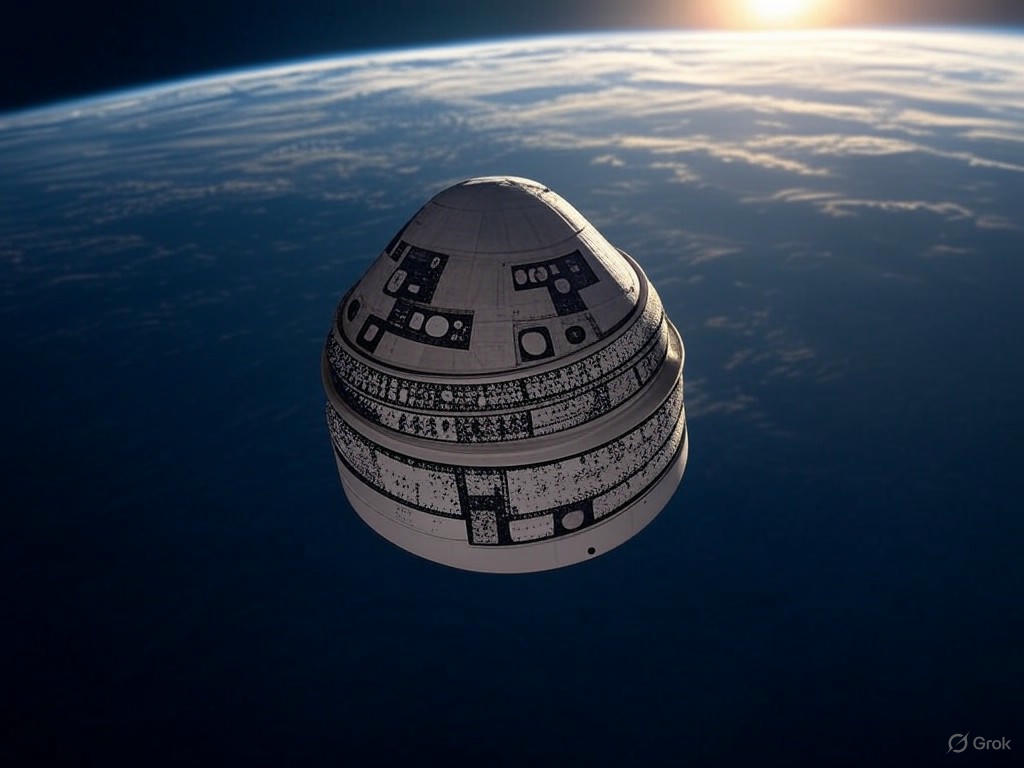Starliner’s Flight Delays Overshadow Milestone Anniversary
As the space community marks a significant milestone—the anniversary of Boeing’s Starliner spacecraft first docking with the International Space Station (ISS) with a crew on board—news of further delays in its upcoming mission has cast a shadow over the celebration. This pivotal moment in space exploration history, initially a symbol of innovation and progress, now prompts reflection on the challenges of maintaining momentum in the race to the stars.
The Starliner program, a cornerstone of NASA’s Commercial Crew Program, was designed to ferry astronauts to the ISS, providing a domestic alternative to reliance on foreign spacecraft. Its first successful crewed docking, which took place a year ago, was hailed as a triumph of engineering and a testament to public-private partnerships in space exploration. Crowds watched in awe as the spacecraft seamlessly connected with the orbiting station, ushering in a new era of American spaceflight. However, the journey since that historic achievement has been anything but smooth. Technical glitches, rigorous safety checks, and unforeseen setbacks have repeatedly pushed back the timeline for the Starliner’s next flight, originally slated for earlier this year. The latest announcement of delays, coinciding with the anniversary, has reignited debates about the program’s reliability and Boeing’s ability to meet the high expectations set for it.
At the heart of these delays are concerns over the spacecraft’s propulsion system and software integration, issues that have plagued the program since its early test flights. Engineers and mission planners are working tirelessly to address these challenges, emphasizing that safety remains the top priority. While these precautions are necessary, they come at a cost—both in terms of time and public perception. Competitors like SpaceX, which has consistently launched crewed missions to the ISS with its Dragon spacecraft, have gained a significant lead, highlighting the pressure on Boeing to deliver. Industry experts note that each delay not only impacts schedules but also risks eroding confidence in the Starliner’s future as a reliable transport for astronauts. Meanwhile, NASA remains supportive, stressing the importance of having multiple crew transport options to ensure redundancy and resilience in space missions.
As the anniversary of the first crewed docking is commemorated, the focus shifts to what lies ahead for Starliner. The delays, while frustrating, are a reminder of the complexities inherent in space travel. Every nut, bolt, and line of code must be perfected to safeguard the lives of those who venture beyond Earth’s atmosphere. For now, the space community watches with bated breath, hoping that the next chapter of Starliner’s story will be one of triumph rather than tribulation. Boeing and NASA are poised to turn these setbacks into stepping stones, proving that perseverance can overcome even the most daunting obstacles. As we celebrate past achievements, the future of Starliner hangs in the balance, a symbol of both human ambition and the relentless pursuit of perfection in the final frontier.


